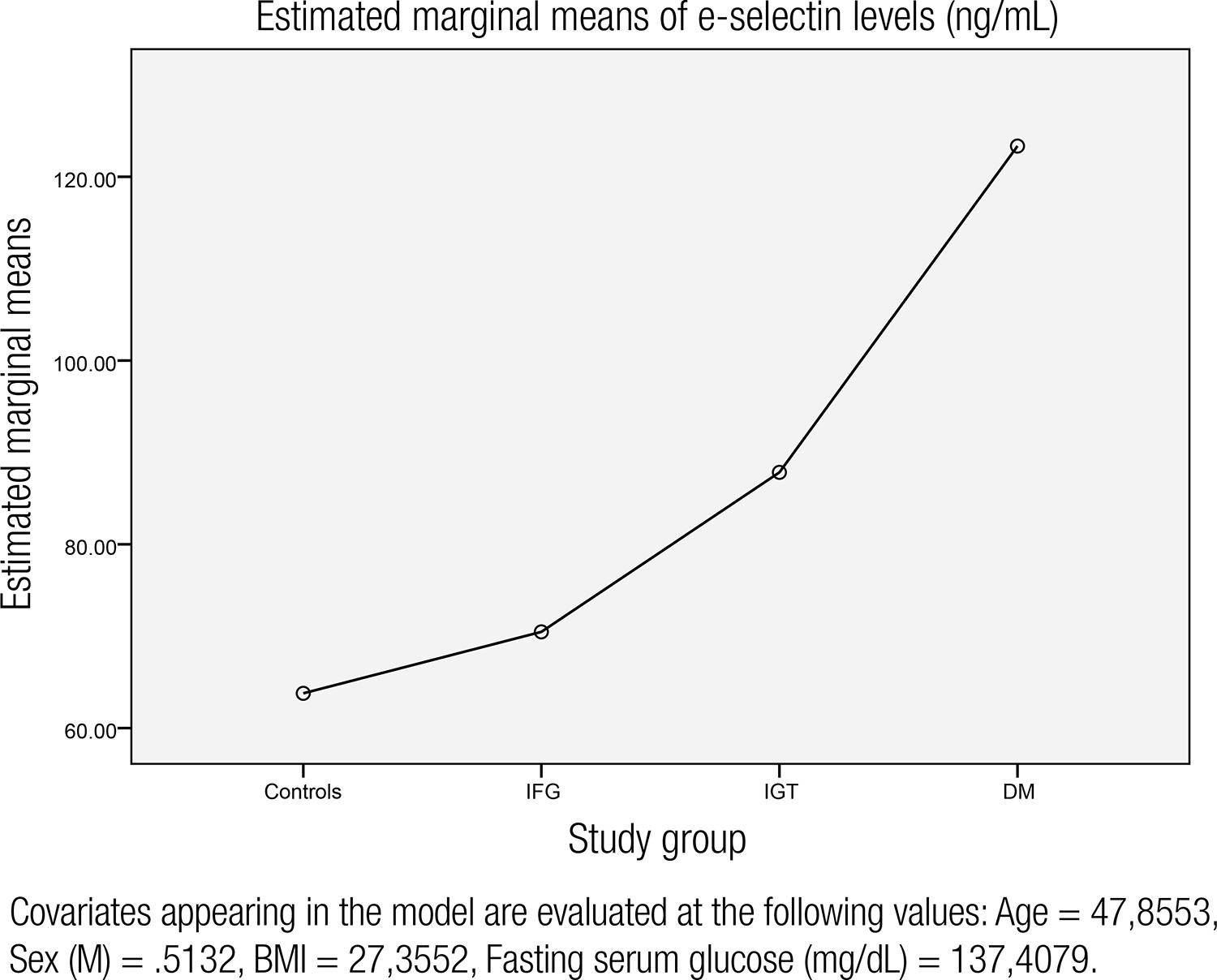Objective
There is a growing body of data supporting the association between diabetes and microcirculatory disfunction. We aimed to study e-selectin levels, and their associations with serum markers of inflammation and arterial stiffness in prediabetes and newly diagnosed diabetes patients in this study.
Subjects and methods
Sixty patients (25 females) with a newly established elevated fasting serum glucose [20 impaired fasting glucose (IFG), 20 impaired glucose tolerance (IGT), 20 newly diagnosed diabetes (T2DM)] and 17 healthy controls (13 females) were included in the study. Serum e-selectin and hs-CRP levels, and arterial stiffness parameters of the patients were studied.
Results
Fasting serum glucose was the most important predictor of serum e-selectin levels. Pulse wave velocity and central aortic pressures were significantly higher in IFG, IGT and T2DM groups, compared to controls (p = 0.001, < 0.001, 0.013 and 0.015, 0.002, 0.009, respectively). The mean arterial pressure did not show any significant association with serum e-selectin and hs-CRP levels (β coefficient: 0.092, p = 0.358; and β coefficient: 0.189, p = 0.362, respectively).
Conclusion
Prediabetes patients have increasing e-selectin levels through the diagnosis of T2DM. E-selectin is associated with serum glucose levels. Prediabetic and newly diagnosed diabetics have higher arterial stiffness measurements. Serum e-selectin may be a good marker of endothelial inflammation and dysfunction increasing in parallel with serum glucose levels, predicting future cardiovascular events.
E-selectin; arterial stiffness; inflammation; cardiovascular risk; hypertension



